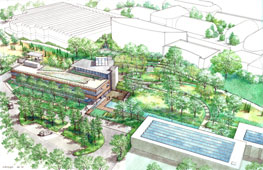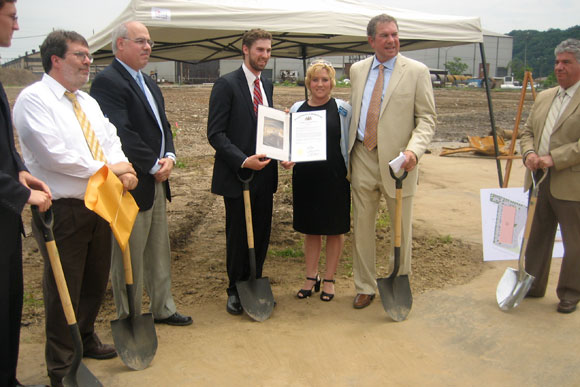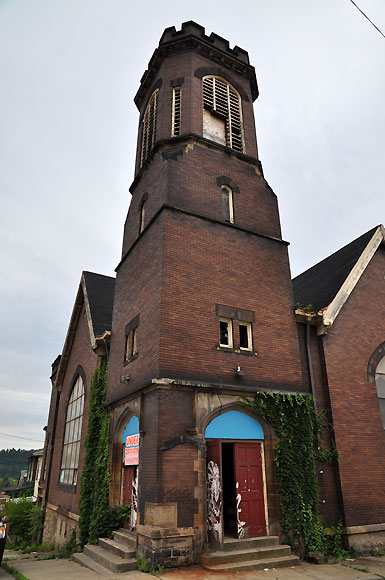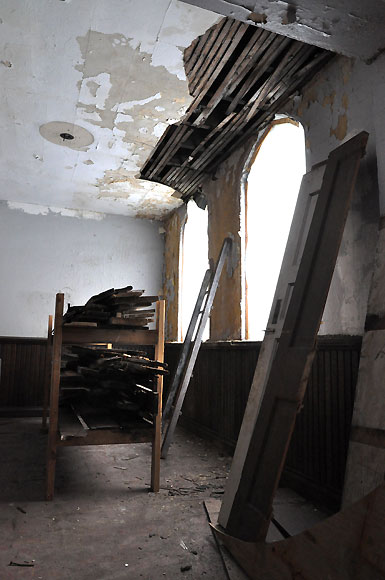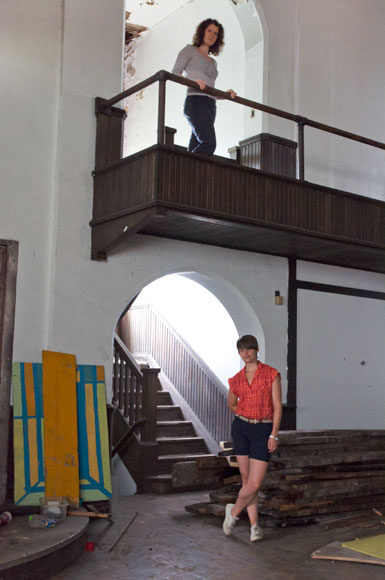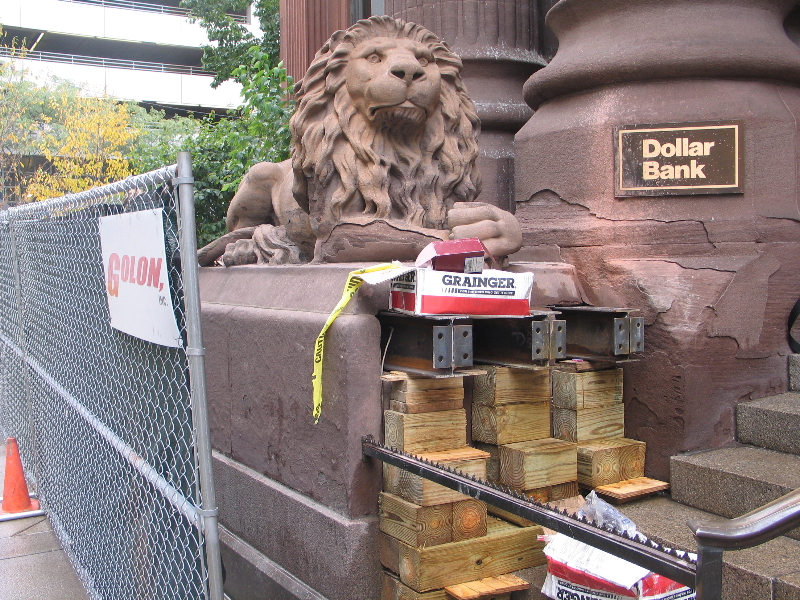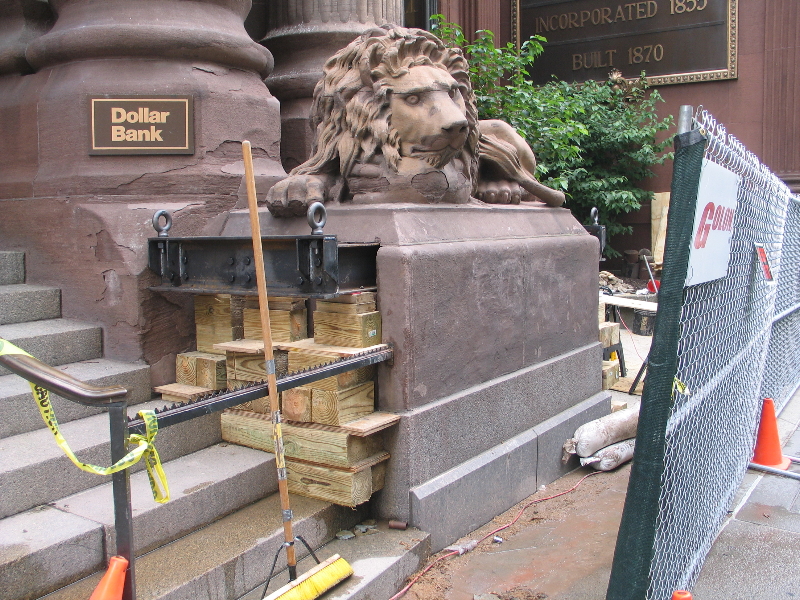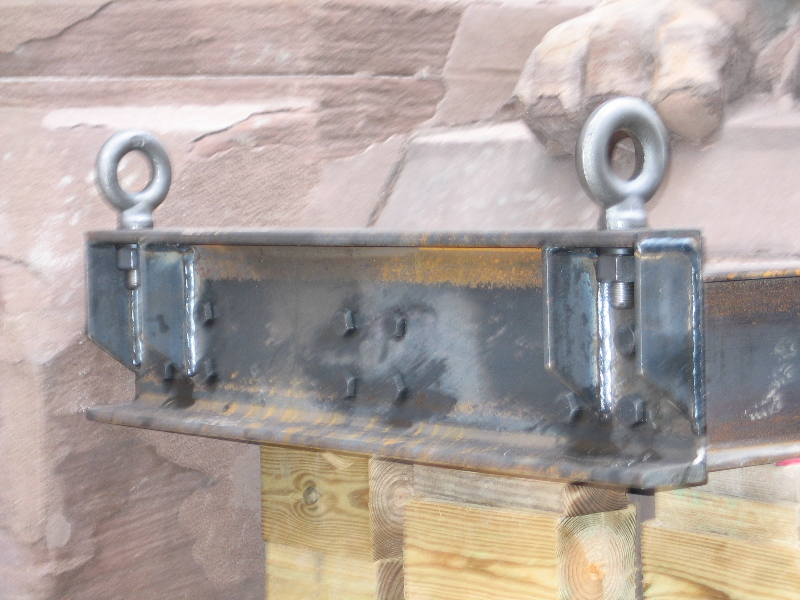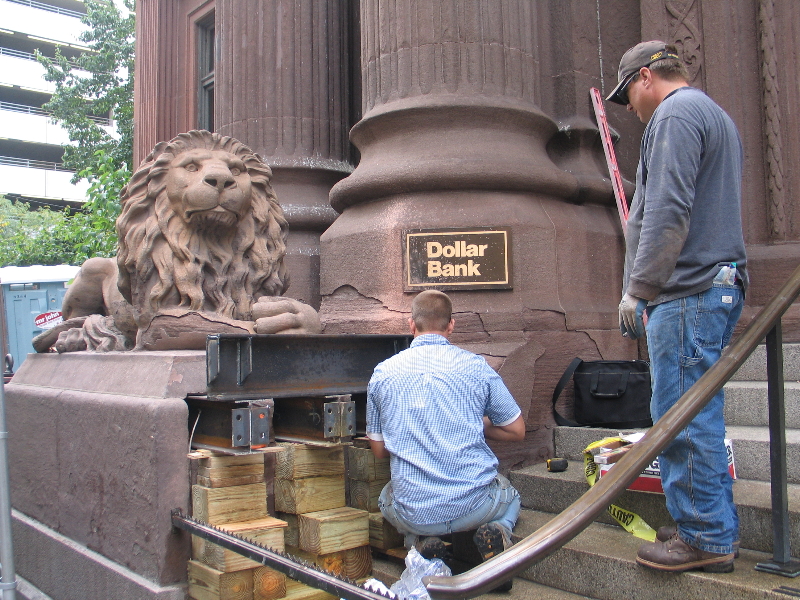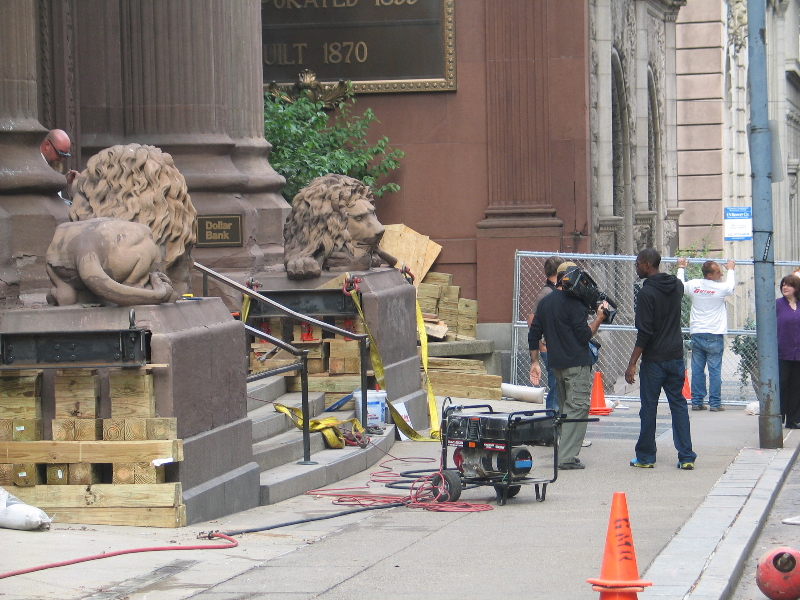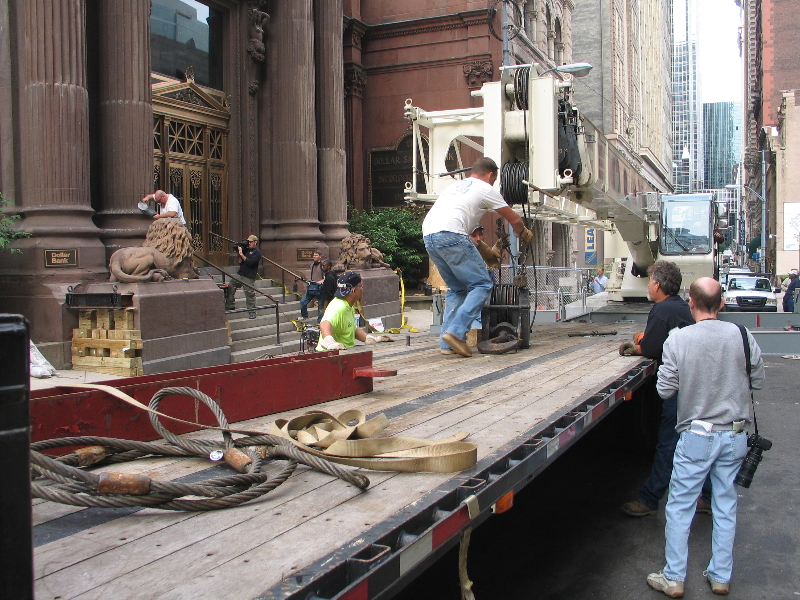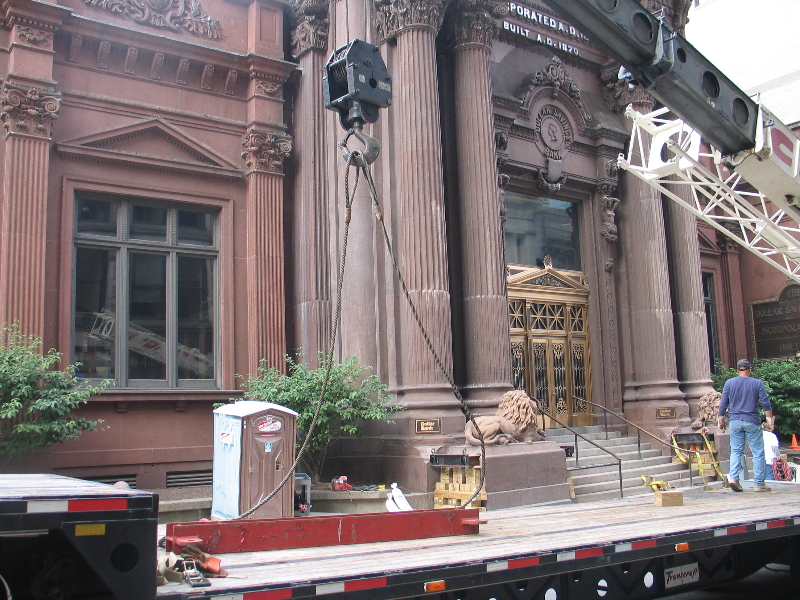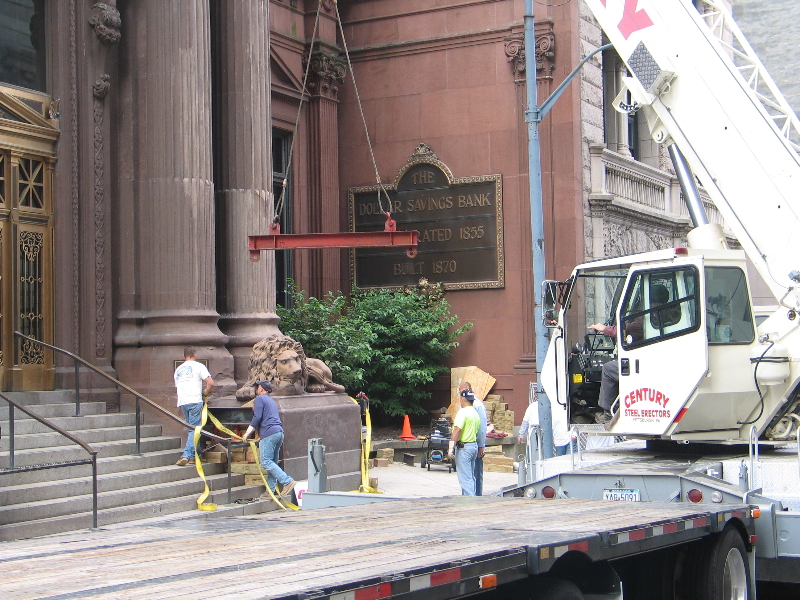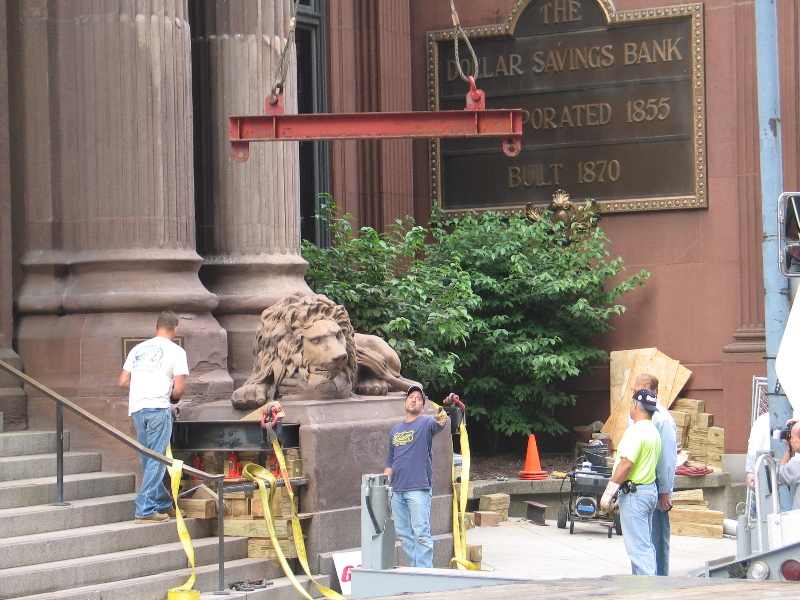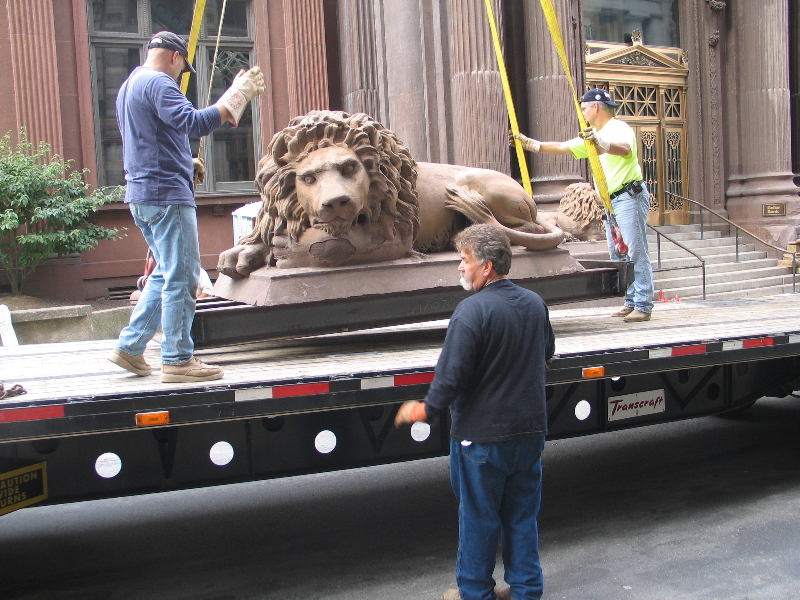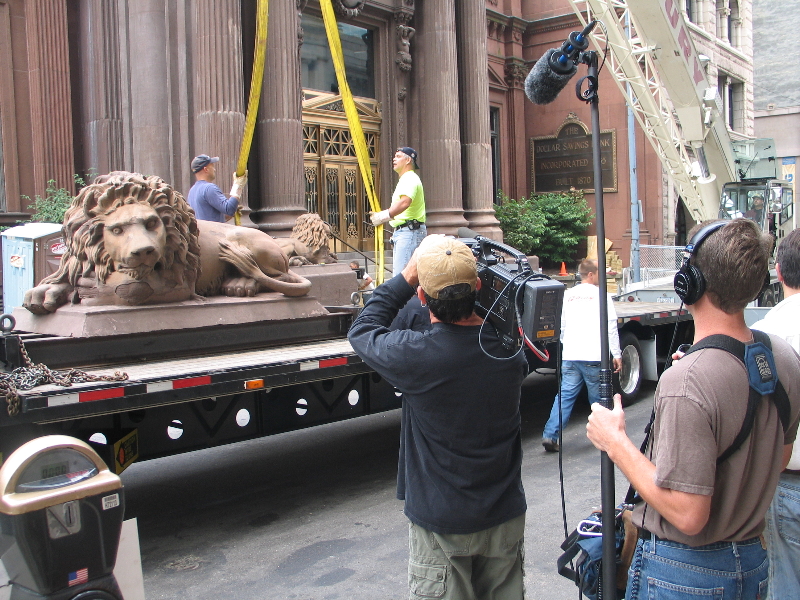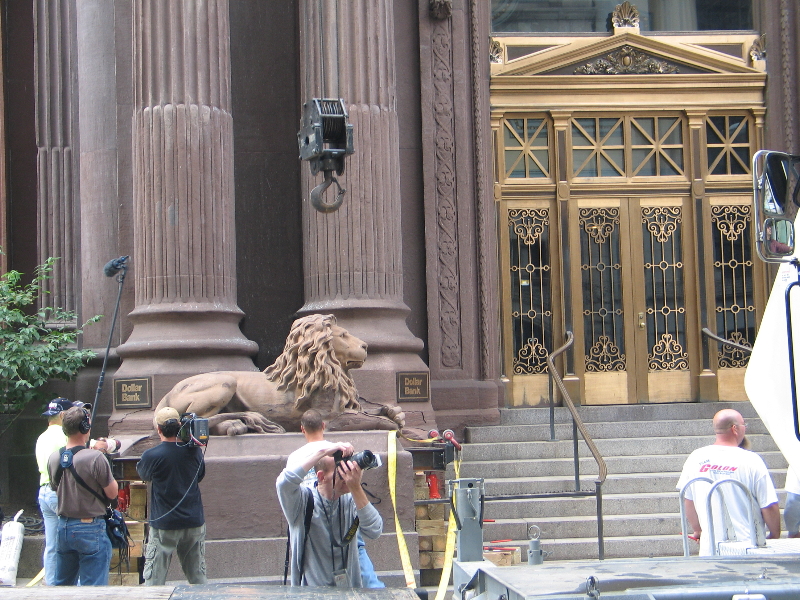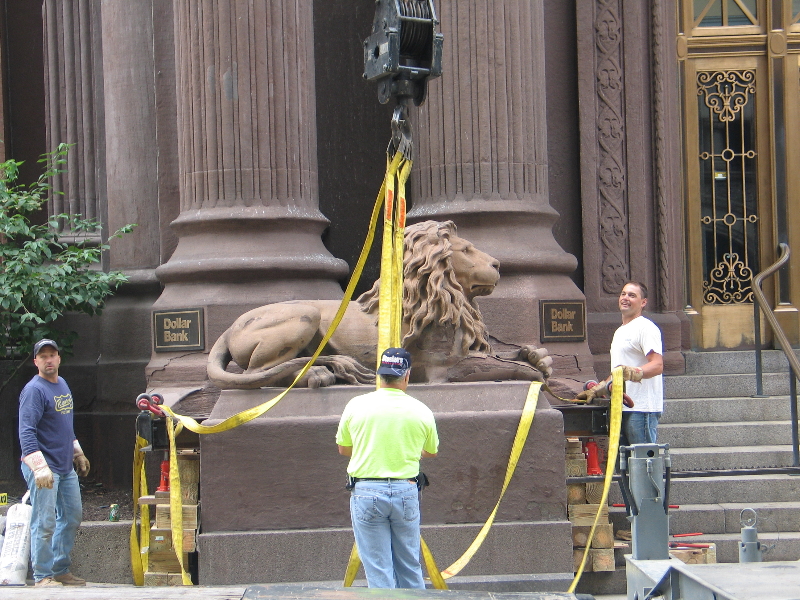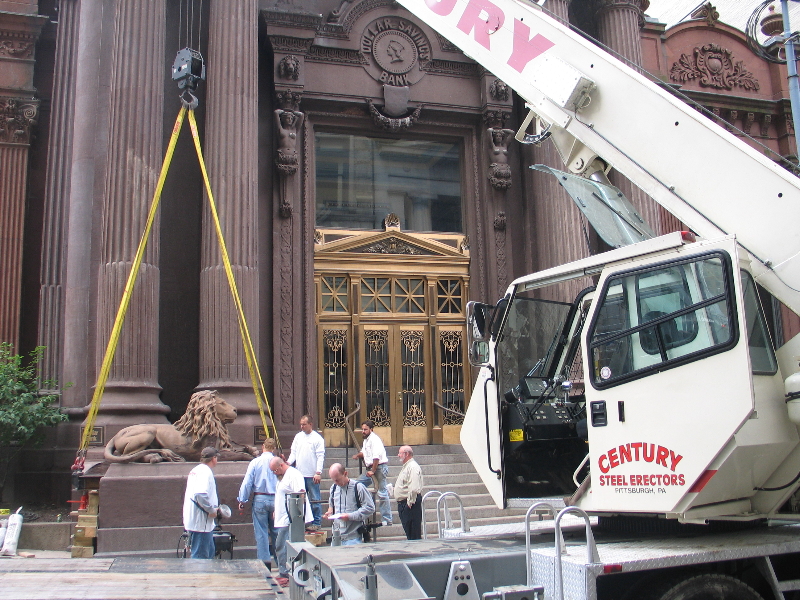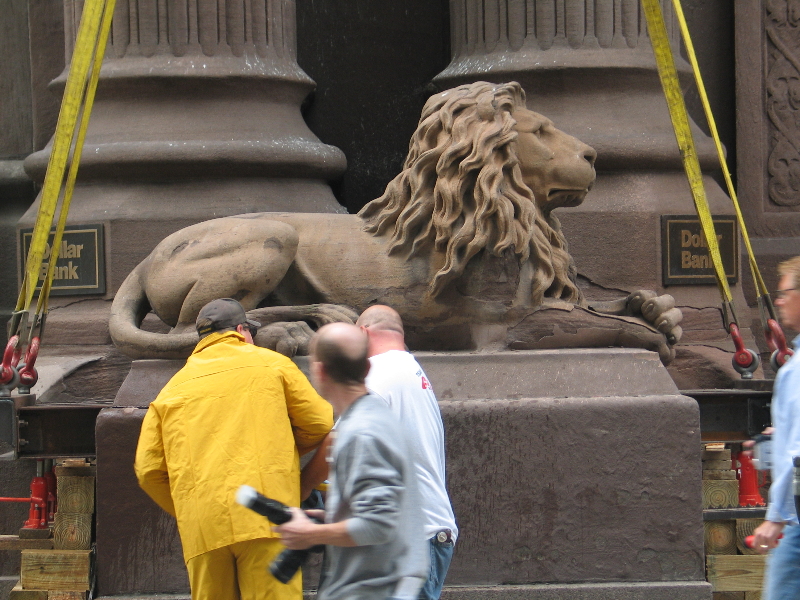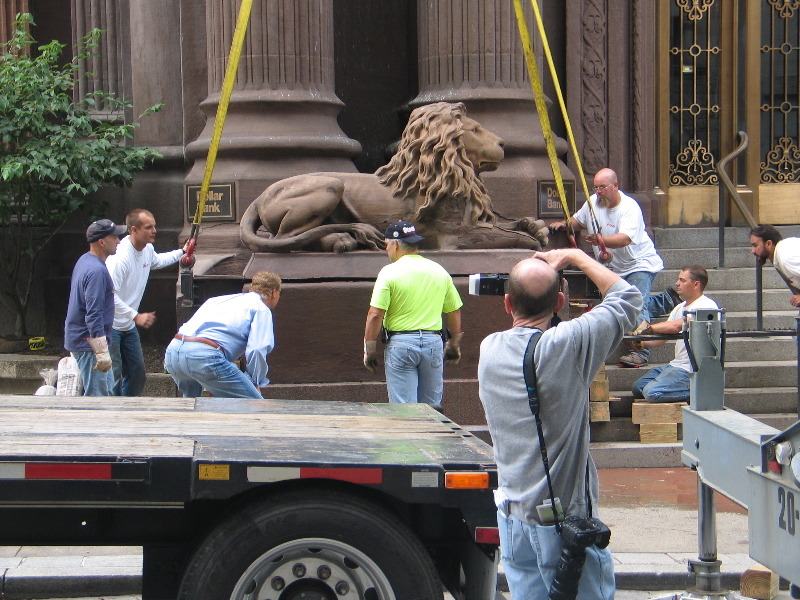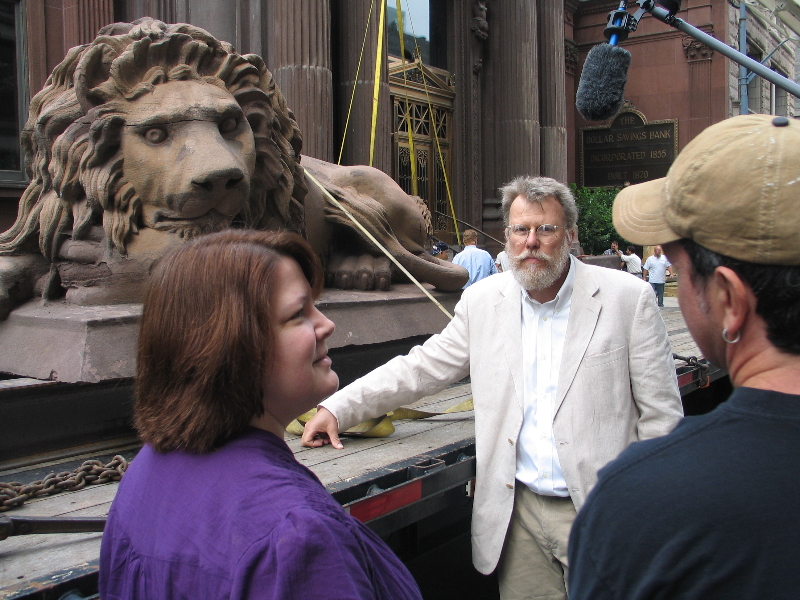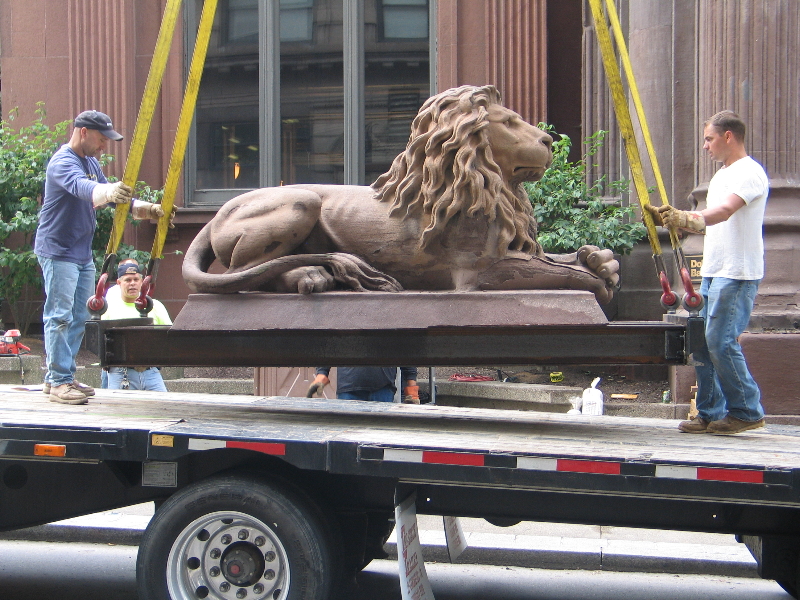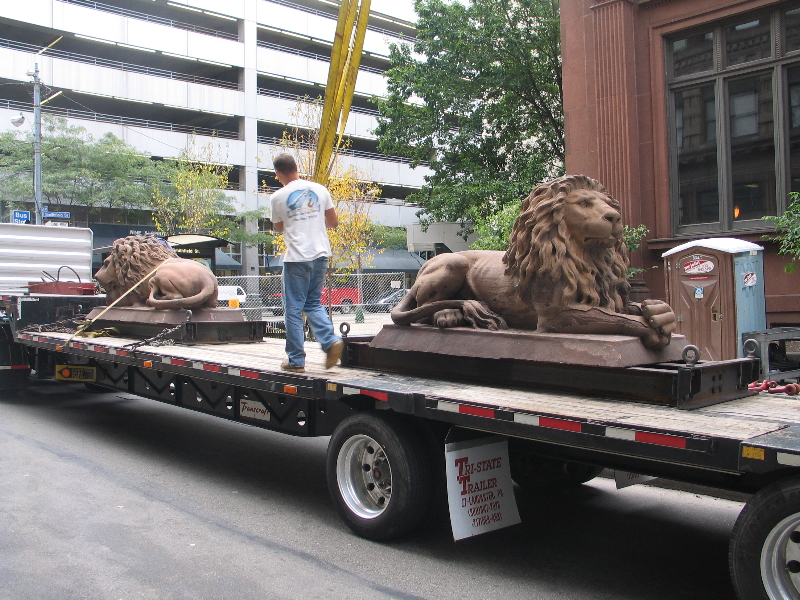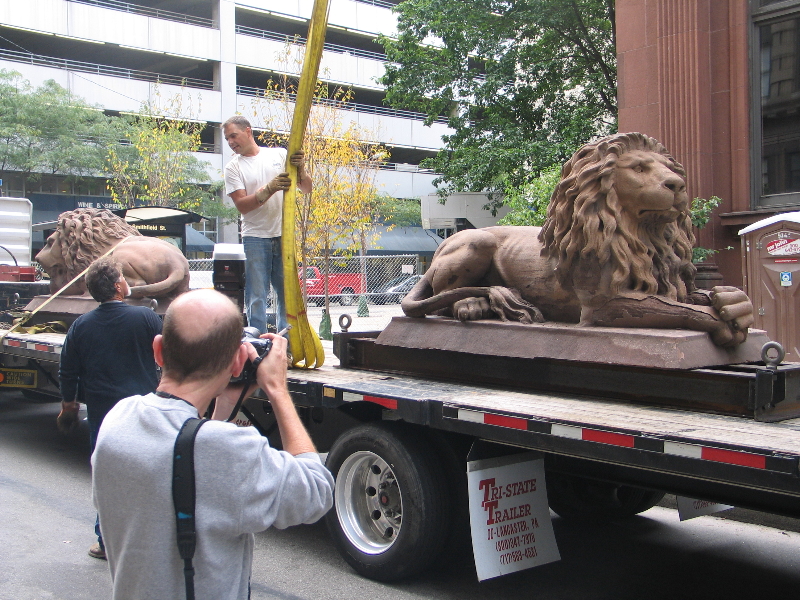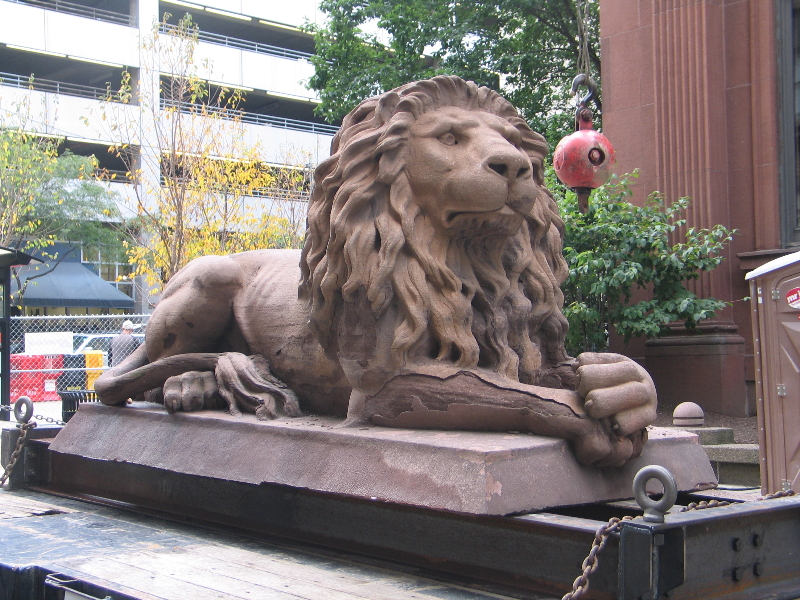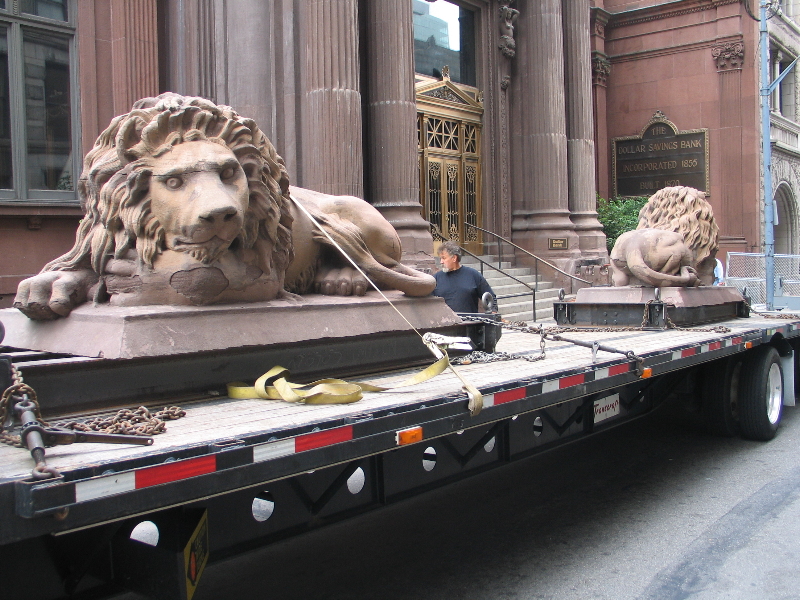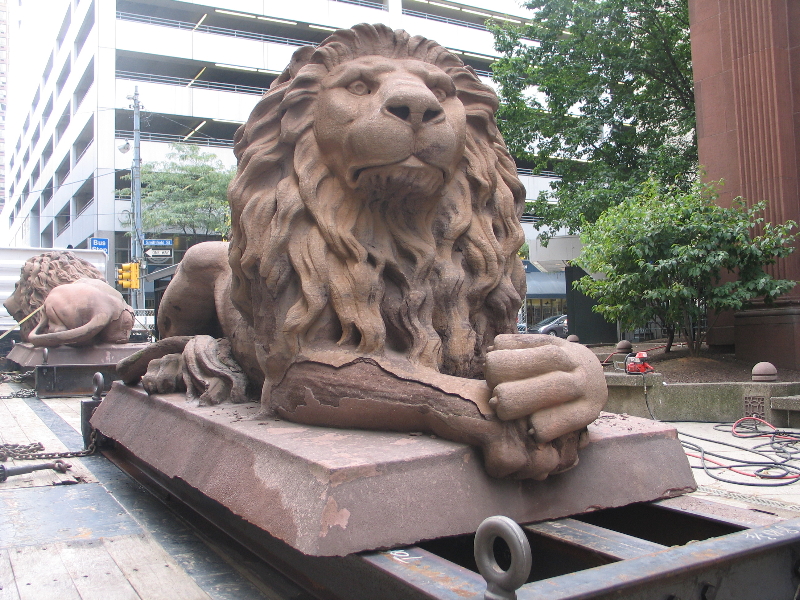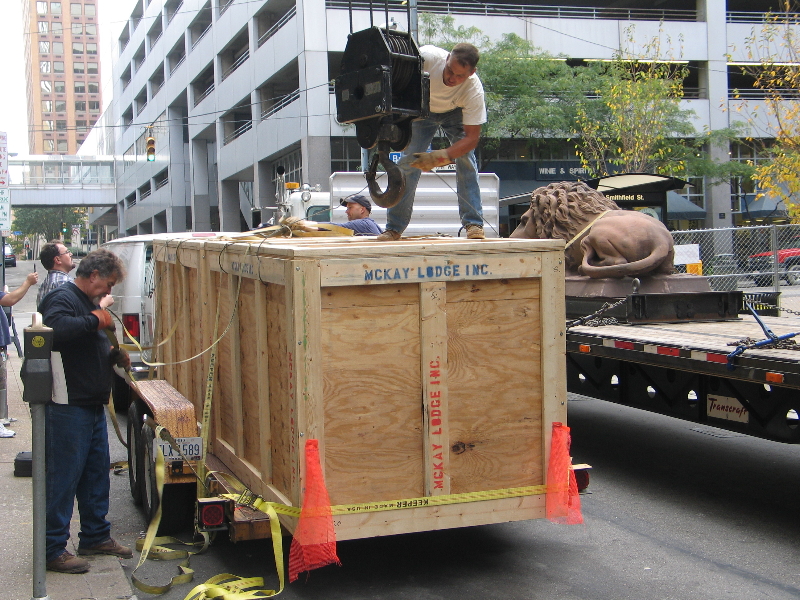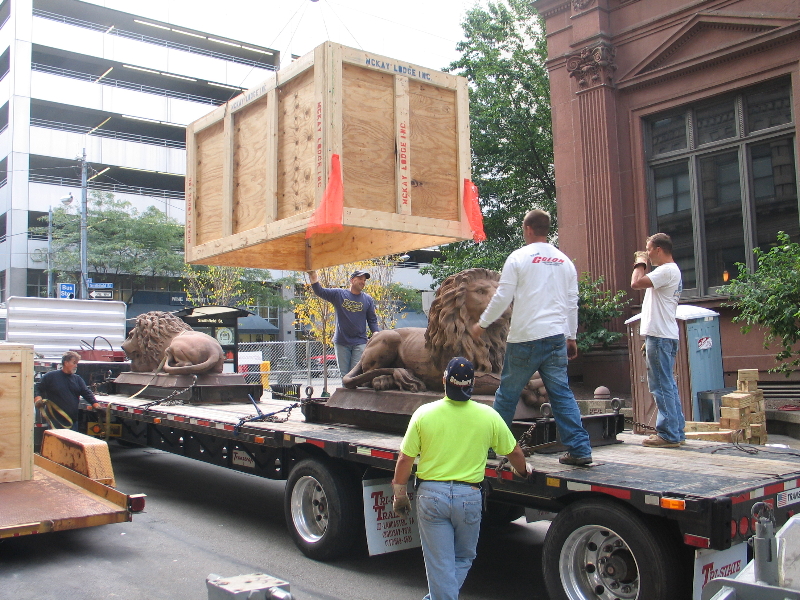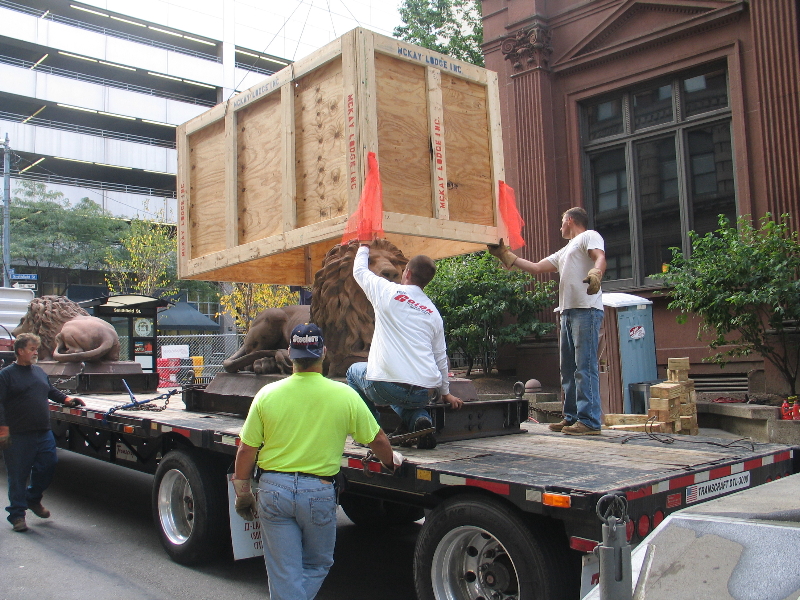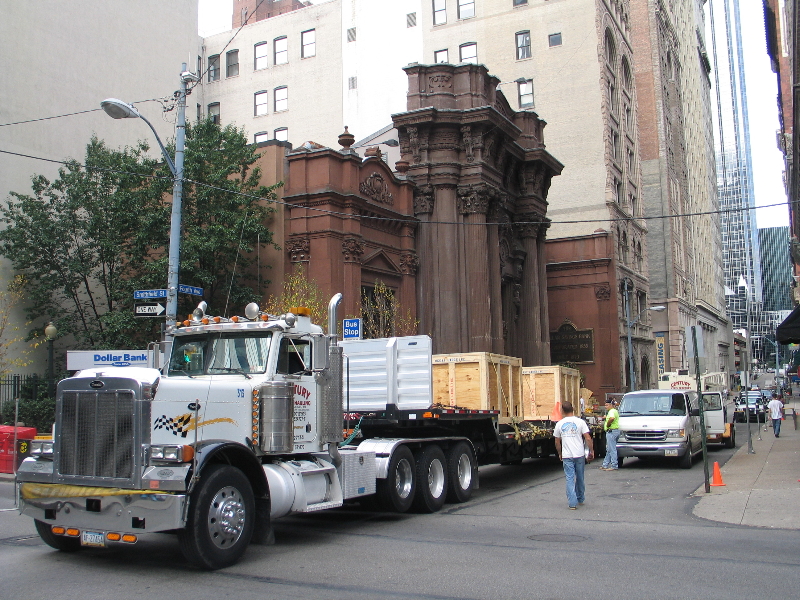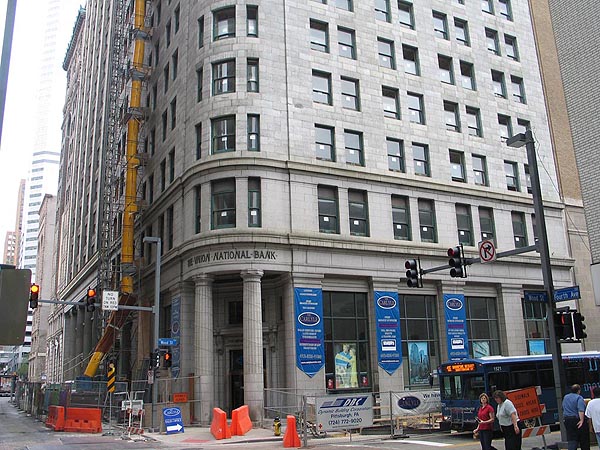
Category Archive: Architecture & Architects
-
Study Offers 6 Options for Mellon Arena
By Jeremy Boren
PITTSBURGH TRIBUNE-REVIEW
Thursday, June 17, 2010Demolishing Mellon Arena would make way for a mix of new homes and high-end office space covering nine city blocks in the lower Hill District, according to a study released Wednesday.
The 107-page report provides the first detailed look at six scenarios, which include restoring the arena to its original 1961 design; mothballing it indefinitely; preserving its unique silver dome; and razing it to build 1,191 residential units and 608,000 square feet of offices.
Representatives of the city-county Sports & Exhibition Authority said last week that they favor demolishing the Igloo and allowing the Penguins to build a mixed-use development — a plan referred to as “Option 5” in the study, prepared by consultant Michael Baker Engineering of Moon.
The firm organized seven meetings and a tour of Mellon Arena for public input. The lengthy report is the result and is open to public comment and revision.
The SEA, which owns Mellon Arena, will consider comments on the report before the authority’s board of directors makes a decision on the arena’s fate, said Chris Cieslak, a consultant working with Oxford Development and the SEA.
“What we don’t want is what has happened in Portland, Oregon, where they have talked about it for nine years and the city of Portland has had to pay the holding costs on (Memorial) Coliseum,” Cieslak said. Groups have opposed razing the Pacific Northwest arena.
Penguins President David Morehouse said the team agrees with the report’s findings, which correspond to a market analysis performed by Penguins consultant AECOM.
He wants demolition of Mellon Arena to begin in a year. The team owns the rights to develop the site.
“The last thing we want to do is put an impediment in front of a developer and say: ‘We want you to put this development in but, by the way, you have to put it underneath this dome,'” Morehouse said. “The people proposing that have no developers and no money for that.”
Those trying to save the arena from destruction are surprised by the study’s release. Architect Rob Pfaffman, founder of the Reuse the Igloo group, said he wasn’t aware the full report was available until told by a reporter.
Pfaffman’s vision is to build a boutique hotel inside the arena with retail and open-air park space.
“They have gone on the record, at least with us, that they prefer Option 5,” Pfaffman said. “We don’t think the process was properly followed.”
Pfaffman’s preservation group hired its own consultant to examine alternatives to tearing down the 49-year-old arena — the National Hockey League’s oldest venue. Mellon Arena will be replaced by the $321 million Consol Energy Center when it opens in August across Centre Avenue.
Pfaffman said if the SEA was sincere about finding alternatives to demolishing Mellon Arena, the authority would conduct a more detailed study and perform an engineering analysis of the building.
Neither has occurred.
The study said that in addition to making room for office space and homes, demolishing the arena would allow three north-south streets to be built. The streets would connect Bedford and Centre avenues — roads that planners eliminated when building the arena.
Razing the arena also would provide space for 208,750 square feet of retail development; a 150-room hotel; 2,145 parking spaces; and 57,560 square feet of “public open space located along pedestrian corridors,” the study said.

-
Phipps’ Center for Sustainable Landscapes Chosen to Test New Green Design Rating System
Pop City Media
Wednesday, June 16, 2010
Phipps Conservatory and Botanical Garden’s Center for Sustainable Landscapes, which is in its final phase of design, has been selected to join 175 other pilot programs to test a revolutionary new rating system for green landscape design called The Sustainable Sites Initiative, or SITES.

SITES is similar to the LEED building rating system, only for landscapes, and is set to become the international standard for eco-friendly landscape practices. The Center for Sustainable Landscapes was asked to join the testing program, because of the new building’s impressive list of sustainable features.
The $20 million Center for Sustainable Landscapes, a research and educational institution, will be a Living Building, going far beyond LEED certification, by generating all of its own energy with renewable resources, and capturing all water on site. It features a green roof, rain gardens, permeable paving, locally harvested and salvaged materials, and a wetland and lagoon system. Landscape practices at the building will include protecting and restoring soil conditions, native plant landscaping and ecosystem restoration, and revolutionary energy efficiency.
“The opportunity to combine cutting edge building technology with the highest standards of sustainable landscape design will allow Phipps to present a complete picture of how important it is to sensitively integrate our buildings into the environment and how important plants are to our lives,” says Phipps’ Director Richard Piacentini.
The pilot phase for SITES is scheduled to run through June 2012, and feedback from The Center for Sustainable Landscapes as it nears the end of its design phase and enters construction, will help SITES finalize their rating system by 2013.
Sign up to receive Pop City each week.
Writer: John Farley
Sources: Liz Fetchin, Communications Director for Phipps Conservatory
Richard Piacentini, Director of Phipps ConservatoryImage courtesy Phipps Conservatory and Botanical Gardens
-
90,000 square foot LEED Building Will Be a Huge Boost to Neville Island’s Revitalization
Pop City Media
Wednesday, June 16, 2010
Ground was broken last Friday at the site of a new $5 million speculative 90,000 square foot flex/ distribution building at 4800 Grand Avenue on Neville Island.
“Neville Island has been waiting to be reborn. I believe strongly in the benefits this area can offer all businesses and its vital role to the economy,” says Chuck Snyder, President of Neville Island Commons, and owner of the property. His son, Josh Snyder, is President of the green minded JLS Land Company, the developers of the site.
Snyder’s company purchased the property in May 2008, which previously housed the corporate offices for Dravo Machining Company, an organization which set up operations on the island during World War I to build 300 ships. The Dravo building sat vacant, however, for the last 15 years. Completion of the new building, which is being constructed with green building techniques targeting LEED certification, is dated for January 2011.
Burns and Scalo Real Estate Services Inc. is the contract representative for JLS, and is set to coordinate and run infrastructure services. Their target tenants for the building include office and light industrial users.
The revitalization of Neville Island is aided greatly by its close proximity to I-79, Pittsburgh International Airport, Route 51, and Route 65. The 90,000 square foot building is the latest project in the redevelopment of the island, following the construction of a new Kings Hometown Grille and 110 suite Fairfield Inn.
In addition to the island’s close location to a number of transportation routes, a Local Economic Revitalization Tax is available, which provides a six year tax exemption to new construction.
Senator Wayne Fontana, who helped break ground for the site, referenced the power of this tax abatement when he said, “Neville Island is a shining example of what can be done through public and private partnerships.”
Sign up to receive Pop City each week.
Writer: John Farley
Sources: Chuck Snyder, President of JLS Land Company
W. Scott Kaplan,Director of Acquisition and Development Services for Burns and Scalo
Senator Wayne FontanaPhotograph Copyright John Farley
-
Under Deconstruction: Transformazium
Pop City Media
John Farley Wednesday, June 16, 2010

Ruthie Stringer can’t relate to the image of Braddock portrayed in the media. “I think life is more complicated than that,” she says as she sits next to a massive pile of wooden joints in what was once The United Brethren Church in North Braddock. Following a fire that damaged part of the building in 2005, the property sat vacant until Ruthie and her friends purchased it in 2008.
In the Greater Pittsburgh area, over 30% of real estate is vacant or underutilized. Instead of viewing abandoned properties as symbols of blight and despair, Ruthie is taking part in a rapidly growing movement called deconstruction, a sustainable alternative to demolition, which sees opportunity and hope in these properties.
Deconstruction is the selective dismantling of a building for the purpose of reusing the materials to build new structures, and it is this process which Ruthie, along with formerly Brooklyn based artists Leslie Stern, Dana Bishop-Root, and Caledonia Curry (better known as Swoon), are using to turn their building into a community arts center called the Transformazium.
After the Pittsburgh space where Swoon and Leslie were planning an art show two years ago fell through, they were invited to move the show to Lauri Mancuso’s Dorothy 6 space in Braddock, which happened to be located on the first floor of Braddock Mayor John Fetterman’s house. “John showed Swoon the Brethren Church, and she fell in love with it,” explains Leslie.
Swoon, who was busy working on other projects around the world, asked her friends to move to Braddock in order to manage the property. They were able to purchase the building through the Allegheny Vacant Property Act, a form of eminent domain that allows the county to take abandoned properties and clear back taxes, in this case over $500,000, so that new owners can purchase the properties at a reasonable rate.
Shortly after purchasing the building, a friend suggested they attend a conference on deconstruction in Buffalo, NY, co-sponsored by Buffalo Reuse and The Building Materials Reuse Association, a non-profit that serves as a representative for the deconstruction industry, informing people about deconstruction and its benefits.
The Many Benefits
“We spent nine weeks learning about deconstruction, and what it would take to do it, ” says Dana. Instead of demolishing the damaged parts of the Transformazium, they dismantled the reusable materials, which they are using to rebuild other damaged areas of the building. As the Transformazium crew learned, the benefits of deconstruction over demolition are huge. The value of reusable salvaged materials directly offsets high labor costs the donation to Pittsburgh’s Construction Junction in Point Breeze, results in a tax benefit for the building owner. In addition, deconstruction offers major environmental benefits.“All reuse is a form of recycling, but not all recycling is reuse,” says Brian Swearingen, the head of Construction Junction’s deconstruction crew. “In deconstruction and reuse, we’re taking that same material, but using it for the same purpose, or slightly altering it for another purpose. When you do that, you’re saving energy, because you have less transportation costs, less energy costs, and no remanufacturing costs, which are high. A good example is a metal table. If you recycle that at a landfill, you have to put it on a truck, probably put it on a train, possibly put it on a ship, and send it maybe halfway around the world to make what is oftentimes a similar product.”
Construction Junction was set up eight years ago by the Pennsylvania Resources Council to spearhead a movement in Pittsburgh away from disposing waste in landfills without exploring its other purposes. They operate a store, which accepts donations of reusable materials from individuals and businesses renovating or demolishing buildings, and sells those materials at a low cost so they can be repurposed.
In addition to the economic benefits to builders and property owners, deconstruction and reuse provide large incentives for communities. “When you buy materials from Construction Junction, you’re helping provide a cost saving to people who are trying to run their small businesses. You are also helping us employ people to recover materials, which puts money back into the local economy,” Brian explains.
The possibilities of job creation through the deconstruction industry in Allegheny County are exciting. “When we’re asked to do an assessment of deconstruction vs. demolition from a workforce development standpoint, there are times when we could create 20 times more jobs deconstructing buildings than if we demolished them,” notes David Bennink, who will be hosting informational workshops about deconstruction in Braddock on June 17 and 18. David is a BMRA board member, Deconstruction Builder of the Year Award winner, and founder of ReUse Consulting, a 48-person company that performs deconstruction across the country for individuals and businesses, and trains people wanting to start their own deconstruction companies.
Let Me Count the Ways
“The jobs are created in four ways. There’s deconstruction and salvage at the jobsite, there’s processing and transportation, there’s retailing and warehouse like Construction Junction, and finally there’s what we call value added jobs, where we take materials and we add value to them in some way, such as reclaiming wood flooring or making old light fixtures more energy efficient,” says David.If deconstruction sounds like a dream industry, especially for revitalizing cities like Pittsburgh, why isn’t it a more common practice? Why have so few people even heard of it for that matter?
The answer to that question is multifarious, but for David the main problem is a lack of information. Oftentimes, contractors don’t tell property owners about deconstruction, because they fear it will put them behind schedule and cut into their part of the contract. “There are tons of people out there that say to us they didn’t know deconstruction was an option. They just knocked down their building, and they would have chosen deconstruction if they’d known,” he says.
Many people fear that deconstruction is too expensive or time consuming, but deconstruction is frequently faster and cheaper than demolition, and 95% of David’s clients over the past 17 years say they would still prefer deconstruction to demolition.
David and Brian both agree that legislation related to landfills is an obstacle. David is quick to point out that in some parts of the country, dumping fees at landfills are very inexpensive, rendering deconstruction unprofitable in comparison. “We’re always trying to point out that there are hidden costs when you do things too cheaply. An example of that would be if you took a bunch of computer monitors and threw them in the landfill, then naturally you have a hazardous waste problem. And this is a legislative issue, because if you’re doing things too cheaply, you’re passing on hidden costs to the future. That’s not really fair competition,” says Brian.
Despite the roadblocks, people involved with deconstruction in Pittsburgh appear very optimistic about the future. Legislation is evolving. For instance, California and Massachusetts have recently passed bills designed to discourage landfill use for materials that could be repurposed, which could encourage Pennsylvania to adopt similar laws. The Community Regeneration, Sustainability, and Innovation Act, a bill that provides economic support for deconstruction practices, is under consideration in Congress.
“We feel like we’re really onto something here. We’re reaching out to everyone and saying that we believe someday soon, deconstruction will be the main choice for building removal,” says David.
Although a lot of hard work still needs to be done deconstructing and rebuilding the Transformazium, the future seems bright. Swoon lives in Brooklyn, but is currently building an adobe dome in the lot across the street from the Transformazium, which will function as a community greeting space. Leslie, Dana, and Ruthie have completed two large projects that involved the community’s participation. It’s clear that the Transformazium is becoming more than a community arts center, but just what that will be remains uncertain, even to the Transformazium. “We are going to let it evolve more organically, and with input from our neighbors as well. We are definitely working towards a community garden in the lot, though”, says Leslie.
“One of the most exciting shift of perspectives has been realizing that the 15104 area is loaded with resources, and that it’s not simply blighted or abandoned. It’s full of people with a ton of skills and interests, there are several businesses that try very hard and care about the area and people, and there are lots of organizations and spaces.
“But not everyone knows or sees this. Deconstruction has allowed us this shift in terms of looking at all the abandoned buildings and seeing them as having tremendous potential value, instead of just being problems,” Leslie adds.
-
Construction to Begin on Connelley Center Project Next Fall
Wednesday, June 16, 2010
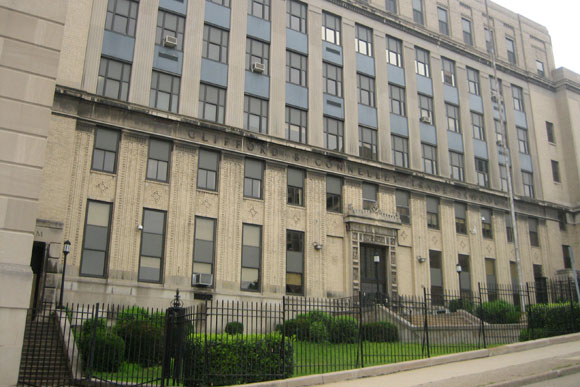
The former Clifford B. Connelley Vocational School will be converted into a green center for sustainable education.
State Senator Jim Ferlo and the board of Pittsburgh Green Innovators hosted tours of the former Clifford B. Connelley Vocational School last Thursday in the Hill District, in order to explain the progress that has taken place in their project to turn the former high school into a green center for sustainable education. The Connelley Project will be a major force in Pittsburgh’s movement towards green workforce development.
The Connelley project is organized by a partnership between Pittsburgh Green Innovators, and the developer Pittsburgh Gateways Incorporated, who are currently leasing the building from the school district. The school district had to shut it down in 2004 due to funding issues.
“The building purchase will be finalized in August, once the school board has finished moving all of its equipment out,” explains Deno de Ciantis, director of the Penn State Center, which plans to be an anchor program in the building.
After the purchase is made, the project will enter phase one of building construction. Both PGI and Green Innovators expect it should be completed by Fall of 2011. They intend to develop approximately 190,000 square feet of the facility’s 230,000 square feet.
“Capital fundraising efforts are on track. Upgrades to the building will include deep energy retrofits, the purchase of energy production equipment, and costs associated with LEED certification,” says Senator Ferlo.
Although a wide number of organizations have expressed interest in securing space at the building, de Ciantis says that leasing on spaces will not begin until after the purchase has been made. What de Ciantis and Ferlo are certain about, however, is that using the Connelley building to educate and train students and adults with the skills they need to excel in green job fields is critical to the growth of the green economy in Pittsburgh.
Writer: John Farley
Sources: Deno de Ciantis, Director of the Penn Center
Senator Jim FerloPhotograph Copyright John Farley
-
Former School to Become Green Center
Friday, June 11, 2010By Diana Nelson Jones, Pittsburgh Post-Gazette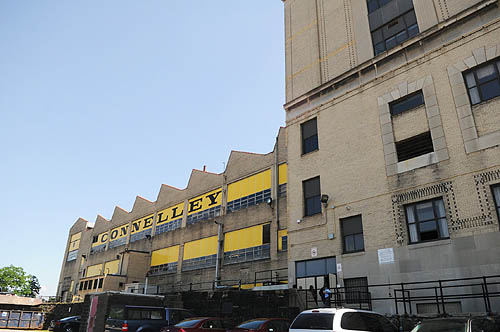
The old Connelly Technical Institute is planned to be used as a business incubator.
The 80-year-old former Connelley Technical Institute in the Hill District is slated to become a green technology demonstration showcase under the ownership of Pittsburgh Green Innovators Inc.
PGI has a sales agreement with Pittsburgh Public Schools and expects to close this summer and begin retooling the former vocational school by fall, said Deno DeCiantis, a PGI board member and director of the Penn State Center, an outreach service for Penn State University in Pittsburgh.

Now vacant, the fifth floor of the "Academic Tower" at the old Connelly Technical Institute contained a full-size commercial kitchen for its culinary students.
The Bedford Avenue school was closed in 2004. It has 220,000 square feet of space. When retrofitted, it will be loaded with green technology to demonstrate function and to absorb the building’s costs.
The prospective new owners envision the site as an incubator of green industry, a job training center for green-industry jobs and a technical support center for work force development.
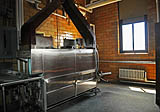
Now used as storage space, the fifth floor of the "Academic Tower" at the old Connelly Technical Institute previously served as a full-size commercial kitchen for its culinary students.
“There are so many jobs that will be created under the broad theme of energy independence,” said state Sen. Jim Ferlo, D-Highland Park, a PGI board member.
PGI is a collaboration of representatives from universities, labor unions, the Green Building Alliance, Hill House and a dozen other entities, plus Mr. Ferlo, state Rep. Jake Wheatley, D-Hill District, and U.S. Rep. Mike Doyle, D-Forest Hills.
Board members led two public tours of the building Thursday, from the spacious top floor with a view of the North Side to the darkened corridors lined with lockers to the ground floor of classrooms that are sky-lit by a sawtooth roof.
State grants of $4 million will enable the organization to create a geothermal pumping system that is expected to provide the building with 65 percent of the energy it will need, said Bill Miller of Pittsburgh Gateways, a nonprofit developer. The extension’s sawtooth roof — each panel of which slants toward the south — “is oriented perfectly for solar panels,” said Mr. DeCiantis.
“There’s nothing we’re doing that isn’t green” Mr. Miller said. Besides the geothermal system, he said, “the rest of our energy will come from solar, wind and microturbines fueled by different energy sources. We will do high-performance glazing, have a green roof, rain gardens and bioswales.”
Mr. DeCiantis said the first phase of retrofitting the building will be under way by fall.
The sales price will be about $200,000, Mr. Ferlo said, because PGI will take over the costs and burdens of remediation and rehabilitation that normally would be required of the seller.
The organization has raised $17 million from public and private donations toward an estimated $16.5 million for first-phase renovations, Mr. Miller said. The entire project will cost about $40 million, he said.
Two years ago, the initiative began establishing an alliance of unlikely collaborators: the Sierra Club, smart-growth advocates, labor leaders and academics.
Anchor tenants will be Penn State and the International Union of Operating Engineers Local 95.
When the project was in the early stage, founding board member Bernie Lynch said the organization’s goal “is to bring all these sectors together to make this an economic hotbed.”
-
Dollar Bank Lions Moved, to Be Restored
by Louise Sturgess
PHLF News
September 12, 2009Dollar Bank Lions: Photos and Story
From about 8:15 a.m. to 10:30 a.m. on Saturday, September 12, 2009, PHLF Executive Director Louise Sturgess photographed the process of removing the 139-year-old Dollar Bank lions from their pedestals in front of the venerable Fourth Avenue and Smithfield Street bank in downtown Pittsburgh. Local companies Golon Masonry Restoration, Inc. and Century Steel Erectors did an excellent job in preparing, handling, and lifting the lions.
“We always point the lions out on our tours,” said Louise, “to many thousands of students and adults, so we wanted to document their removal. We have even designed a T-shirt, with Dollar Bank’s permission, featuring one of the lions guarding our Historic Landmark plaque. We give the T-shirt to students to wear on our downtown tours.”
PHLF has had several conversations with Dollar Bank over the past few years since the lions were showing extreme signs of deterioration. Many PHLF members expressed their concern to our staff over the deterioration of the lions. We commend Dollar Bank for putting together a plan that calls for both restoring the original lions and displaying them inside, in a protected environment––and making an exact replica of each lion for installation outside, on the original pedestals.
Where the Lions Have Gone
The two lions, each carved by Max Kohler in 1871 from a single block of Connecticut brownstone, were lifted by a crane, loaded onto a flatbed truck, and transported to McKay Lodge Conservation Laboratory, Inc. in Oberlin, Ohio. There they will be restored and returned to Pittsburgh in midyear 2010, and placed inside, in a yet-to-be-determined location. Since the original lions are works of art they will be displayed in a place where they will no longer be damaged by weather.
In addition to restoration of the original lions, two new lions will be replicated and installed on the pedestals at the Fourth Avenue building in 2010. Nicholas Fairplay of Fairplay Stonecarvers LLC, also in Oberlin, Ohio, is a European-trained artisan and master carver who will use digital imaging and computer modeling to produce two new lions, each of matching uniform color. The stone itself will come from a quarry in China, since it was determined through a world-wide search that stone from that quarry most closely matches the original brownstone.
PHLF Co-founder Describes the Lions Best
Since the lions will be gone for a year, our members and friends might take comfort in revisiting Jamie Van Trump’s essay, “Lions in the Streets: A Sculptural Hunting Party in Pittsburgh,” from Life and Architecture in Pittsburgh, published by PHLF in 1983. Jamie Van Trump (1908-1995) was a co-founder of PHLF and its architectural historian:
“The financial district of Pittsburgh has, in fact, a not unsurprising affinity for lion sculpture, and one can go hunting with profit in the space of three or four blocks on Fourth Avenue. The lords of this commercial veldt are the two great couched animals in brownstone to the left and right of the portal of the Dollar Savings Bank (1869-71), whose architect was the Philadelphian Isaac Hobbs, but whose sculpture was done by Max Kohler, a skillful stonecarver of the period. Beneath the Hellenistic cornices, the Baalbek shadows of the looming façade, these heavy representatives of financial probity gaze, like Newfoundland dogs, at the passer-by with a stern domestic majesty. There is no doubt that these hearth-rug champions are the Noble Animals so dear to Victorian sentimentality. Despite their tameness and their bathos, however, they are, perhaps, the Pittsburgh lions that one loves best; they have a gemütlich dignity, a cozy grandeur that is entirely charming. They remind us, somehow, of rich elderly uncles who might, possibly, remember us in their wills.”
-
Landmarks receives preservation easement on historic downtown building
April 2, 2009
PHLF NewsOhio-based Spruce Street Properties, Ltd. has donated a preservation easement to Pittsburgh History & Landmarks Foundation on the exterior of The Carlyle, at Fourth Avenue and Wood Street that is being converted to luxury condominiums.
A preservation easement is a voluntary legal agreement made between a property owner and an authorized preservation organization to preserve the exterior of a historic building and assure appropriate alteration. The easement will be recorded with the deed, run in perpetuity and assist current and future owners in preserving the buildings historic and architectural features.
Pittsburgh History & Landmarks Foundation will be the monitoring agent for the easement and received a donation from Spruce Street Properties to assure the necessary funds to defend and monitor the easement forever.
“David Bishoff, a long-time owner of many buildings in Pittsburgh and a staunch supporter of maintaining the wonderful fabric of downtown through the preservation of its historic buildings, is to be commended for protecting the exterior of this important building which is a contributing structure in the Fourth Avenue Historic District,” said Foundation President Arthur Ziegler. “Once again, a creative developer has shown how we can move forward by building on our past.”
The Carlyle, formerly the Union National Bank Building, was designed by MacClure & Spahr and constructed in 1906. The 21-story neo-Classical building was a focal point of Pittsburgh?s Fourth Avenue financial district, once one of the most significant financial centers in the country. The Carlyle will provide downtown residential ownership starting at $279,000.
Pittsburgh Mayor Luke Ravenstahl attended the Foundation’s board meeting when the announcement was made.


